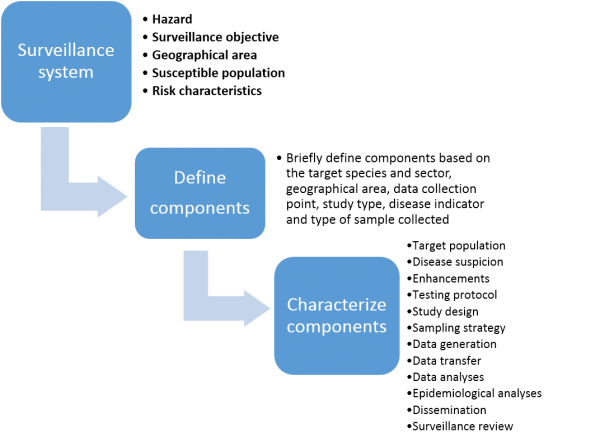Welcome to the surveillance design framework!
This WIKI was developed and is maintained by the SANTERO consortium (risk-based Surveillance for ANimal healTh in EuROpe, https://santero.fp7-risksur.eu) , which aims to promote the development of risk-based surveillance methods and provide support for their dissemination and integration in existing surveillance routines.
A set of tools has been developed to provide those designing surveillance in Europe with science-based frameworks to guide them through the systematic process of design and evaluation. This WIKI is part of that framework, and was built to collect content and advice that can support users who want to design animal surveillance activities. The content is particularly useful when accompanying the design framework tool, which can be found as a web-application at https://survtools.org. An Excel version is also available for users who prefer to work offline.
The diagram below shows the available tools, and how they complement each other to support users through each step of the process of surveillance design and evaluation. Click on the links to open a new tab/window for each tool. You can watch a short instructional video for an overview of all tools and how they complement each other.
In general, the first step is to set up the surveillance system via the online tool (https://survtools.org) as this information is required for both the design framework and the EVA tool. A short training module on the structure of the framework and the combined use of WIKI and offline tool is available here.
Members can contribute by editing the wiki and posting discussions, if you want to become a member, don't hesitate to contact us:
https://santero.fp7-risksur.eu
The framework was informed by extensive reviews of the literature, as well as a review of existing surveillance systems in Europe. The framework now lives on this wiki space in order to be improved and kept up to date by a user community of surveillance designers.
Navigate through the pages of this wiki (menu on the right) to find information about the process of designing surveillance, step by step, as well as other useful information to design surveillance, such as a glossary and redesign to improve performance targets.
Target user: The surveillance design framework was developed to attend the needs of those tasked with “surveillance design”. The users are therefore expected to be “competent and technical level users who design, implement or evaluate surveillance strategies for infectious livestock diseases within the European Union”. Likely it will not be an individual, but rather a team, gathering knowledge in epidemiology and surveillance. The team is also expected to be supported by diagnostic experts and ideally an economic advisor.
As you will see in the step by step advice, the framework supports the design of surveillance at two levels, the surveillance system and its surveillance components.

When designing a surveillance component the user is guided through ten steps: target population, defining disease suspicion, surveillance enhancements, testing protocol, study design, sampling strategy, data generation (sample collection), data/sample transfer, data translation (sample analyses), epidemiological analyses, dissemination of results and surveillance review. Through each of these steps, the user is presented with the surveillance decisions he or she needs to make and document. The user is given advice and information gathered from the literature and expert opinion, as well as links to any relevant statistical and epidemiological tools. This WIKI space allows users to contribute and keeps advice dynamic and peer-reviewed.
The output of the process is a surveillance design informed by current epidemiological knowledge and tools as well as full documentation of the design and decisions made. Moreover, the framework is linked to the RISKSUR tool for evaluation of surveillance components (EVA tool). Together, the two frameworks promote a structured and systematic approach for surveillance design and evaluation, promoting comparable, transparent and cost-effective surveillance.

